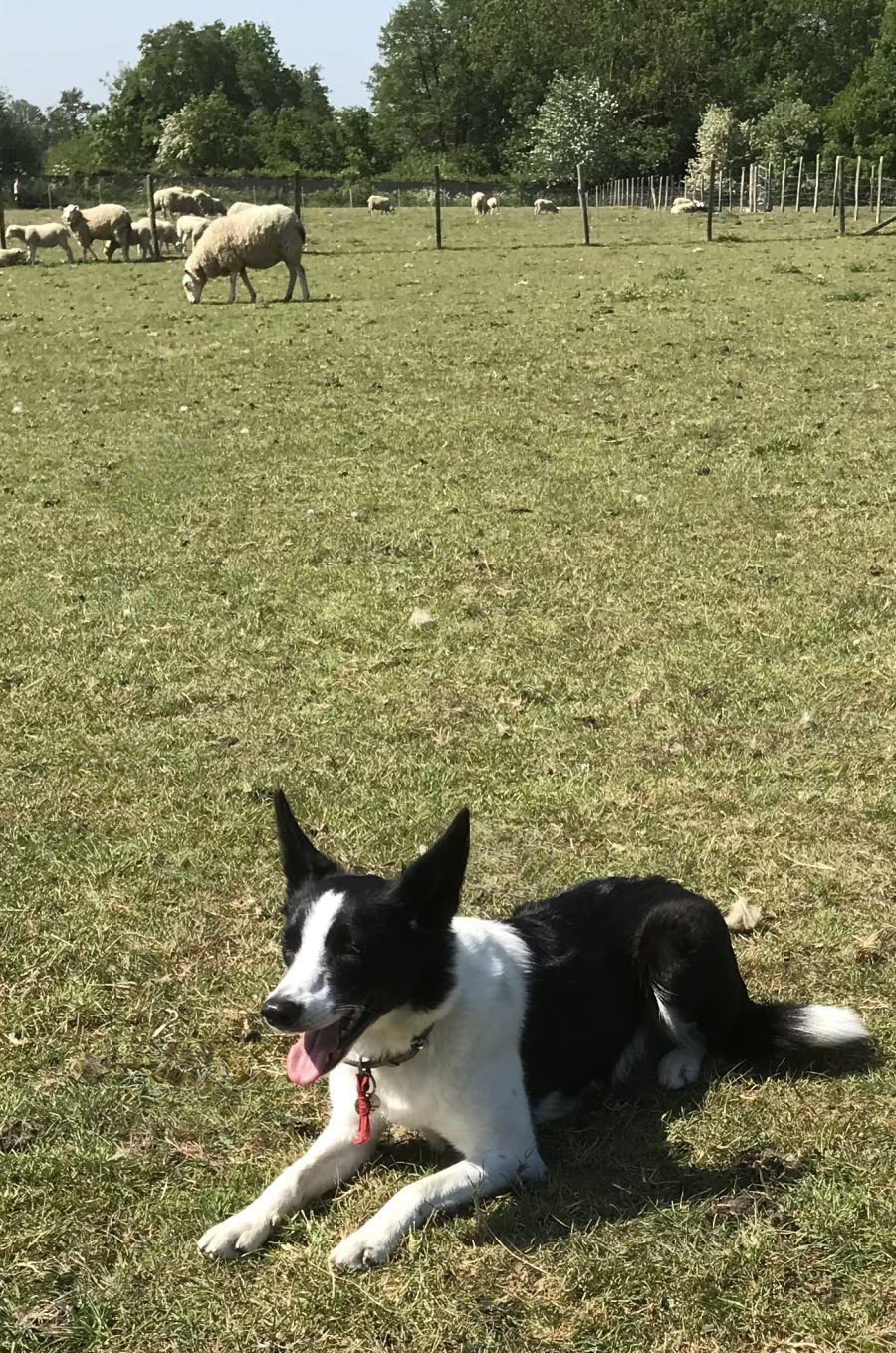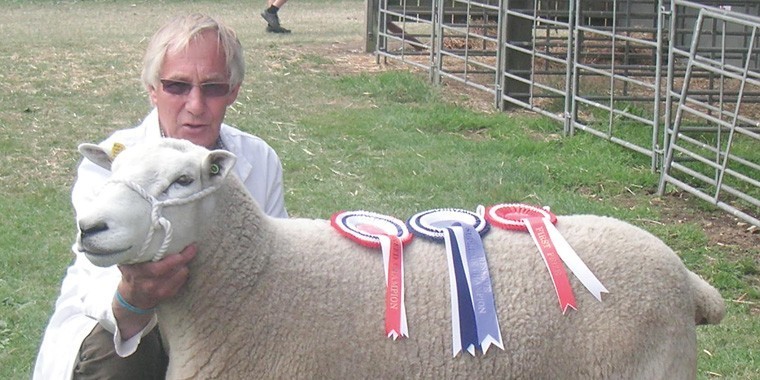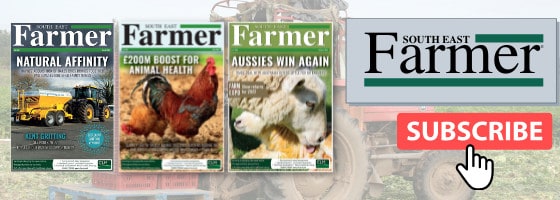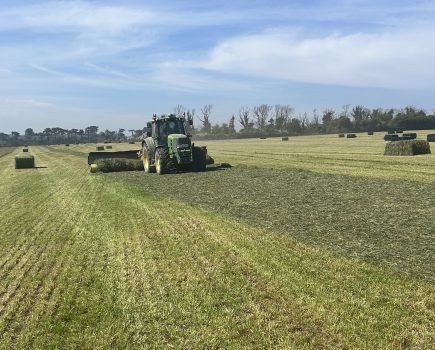“It never rains but it pours.” So goes the old saying; one could certainly be forgiven for thinking that the first part of this is a truism. With parts of the South East not seeing any significant precipitation for almost three months now, and only 18% of average March and April rainfall, many sheep keepers are becoming concerned about the availability of grass, and not just for grazing. The dearth of rainfall so far this spring will no doubt impact on both yields and the quality of this season’s hay and silage crops.
Grass in much of the region has simply not known what to do this year. The near drought and scorching sun was preceded by cold and wet conditions with low soil temperatures, delaying the onset of grass growth and resulting in grass simply not having a chance to get going. Last year was a stop start sort of a year, but this year so far it seems to be a stop stop sort of year, with grass unable to realise its normal seasonal potential. The spring flush has simply not happened.
Having come under some considerable stress, first cold and now moisture, I suspect that if and when grass has a chance to get away it will simply miss out much of the leafy phase and go straight to the flowering and seeding bit; I imagine that toppers will be out and rather busier than normal this season in an endeavour to prevent grass running to seed and to maintain some leafy production, moisture permitting, that is.
Tight grass supplies have already impacted our own feeding regime. As a prolific breed on relatively poor permanent pasture, our Lleyn almost always need a bit of hard feed post-lambing simply to stimulate the level of milk production needed to do a respectable pair of twins well. This generally includes a bit of challenge feeding to build towards a good peak milk yield at three or four weeks into lactation; tailing off towards weaning from a high peak yield will significantly increase total lactation production.
Ordinarily, after a bit of feed post-lambing for a decent peak yield, I will let grass do the rest, or grass plus a bit of a contribution from mum; allowing her to do what sheep were designed to do, milk off her back, a perfectly natural process and why we try to get them into good condition pre lambing. Normally ewe feed would have stopped weeks ago, but with the uncertain grass supplies I’m still feeding a bit (mid-May) simply to help and stretch grass supplies.
My approach to creep feeding has always been strategic rather than routine. In a good season, lambs will never see it but this year the feeders have been deployed and I’m now beginning to introduce a bit of creep. I don’t like pushing lambs on too hard and will never feed ad lib, but the time has come to switch from helping the ewes produce milk to feed lambs to putting the feed directly into the lambs, which is rather more efficient.
The latter part of the adage I started with, “but it pours”, we wait and see. Fingers crossed that this is equally true; we already have a substantial moisture deficit to make up and it’s not even summer yet. The dry spring has also impacted on arable producers, particularly following a poor autumn and winter which have together generated substantial issues which will no doubt inflate next winter’s feed prices.
As an industry, sheep production (and the rest of agriculture) is coming under pressure from all sorts of directions. We certainly cannot rely on any positive support from our current administration, which seems to have little understanding or empathy for the sector. We are at a time when we need all the support that we can get from the general public; they are our customers and we now really, more so than for a long time, need them onside and buying British. To that end I would, on behalf of the whole sheep sector, like to say a big ‘thank you’ to all of those producers who have had the courage to put themselves out there, committing a tremendous amount of time and effort into organising lambing open days and weekends.
We have all, for years, been encouraged to diversify and seek alternative income streams and to some that has been the prime motivator in throwing their farm open to the public for a day or two to generate cash, some rather too much so, but I know that many of the producers who have hosted lambing events have rather more than simply generating income in mind; a large part of their motivation, for some the primary function, has been the desire to inform and educate the general public, our customers.
Almost any conversation with a member of the public, at shows, over the gate, at lambing time etc, quickly demonstrates how ignorant many of them are about what we do as a sector. I don’t mean that unkindly, after all we all have gaps in our knowledge, although some rather more so than others. There is a huge knowledge gap between the sheep sector and most of our customers, many of whom have no idea how much time, effort, cost and commitment goes into producing a good crop of lambs each year, and it is only by helping to inform and to fill some of those knowledge gaps that we can really begin to have some degree of meaningful communication and mutual understanding.
Inviting the general public onto your farm, often in significant numbers, at a busy time of the year, is not easy; it’s a lot of work and it invites scrutiny and, inevitably, some with alternative agendas who seek only to criticise. But every member of the public who, after a visit to a lambing event, returns home a little wiser and more sympathetic to the industry and what we do, is a win for the whole sector. So, to all those who have put themselves out there for the benefit of the industry to help inform, educate and open up channels of communication, a very big well done; give yourselves a well-earned pat on the back!

For more like this, sign up for the FREE South East Farmer e-newsletter here and receive all the latest farming news, reviews and insight straight to your inbox.







